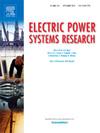The total accommodation capability curve for a distribution network considering N-1 criterion
IF 3.3
3区 工程技术
Q2 ENGINEERING, ELECTRICAL & ELECTRONIC
引用次数: 0
Abstract
The total accommodation capability curve (TAC curve) can completely describe the DG accommodation capability of a distribution network. The urban distribution network generally adopts the security constraints under N-1 criterion, but the formulation of the TAC curve in the existing studies only considers the network constraints under normal operation conditions considering N-0 criterion. To fill this gap, this paper develops a TAC curve model considering security constraints under N-1 criterion in distribution networks. The model is based on alternating current (AC) power flow because the problem of voltage override after DG integration cannot be ignored. Then, the solution and plotting method of the TAC curve are proposed. The method is based on the DC power flow model combined with voltage calibration correction, which is easy to solve and accurate. Finally, test systems are used to verify the proposed model and method. The rules between the N-1 TAC curve and the N-0 TAC curve and the main factors affecting the TAC curve are analyzed. The application of the TAC curve to planning is also provided.
求助全文
约1分钟内获得全文
求助全文
来源期刊

Electric Power Systems Research
工程技术-工程:电子与电气
CiteScore
7.50
自引率
17.90%
发文量
963
审稿时长
3.8 months
期刊介绍:
Electric Power Systems Research is an international medium for the publication of original papers concerned with the generation, transmission, distribution and utilization of electrical energy. The journal aims at presenting important results of work in this field, whether in the form of applied research, development of new procedures or components, orginal application of existing knowledge or new designapproaches. The scope of Electric Power Systems Research is broad, encompassing all aspects of electric power systems. The following list of topics is not intended to be exhaustive, but rather to indicate topics that fall within the journal purview.
• Generation techniques ranging from advances in conventional electromechanical methods, through nuclear power generation, to renewable energy generation.
• Transmission, spanning the broad area from UHV (ac and dc) to network operation and protection, line routing and design.
• Substation work: equipment design, protection and control systems.
• Distribution techniques, equipment development, and smart grids.
• The utilization area from energy efficiency to distributed load levelling techniques.
• Systems studies including control techniques, planning, optimization methods, stability, security assessment and insulation coordination.
 求助内容:
求助内容: 应助结果提醒方式:
应助结果提醒方式:


